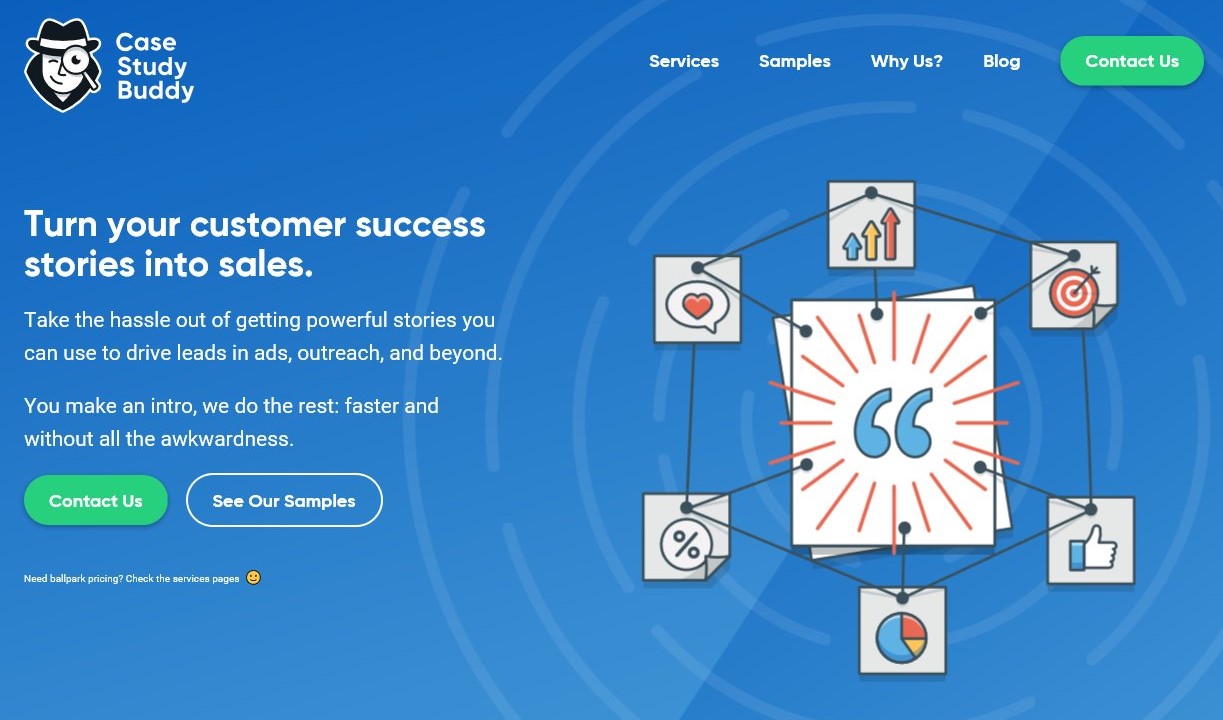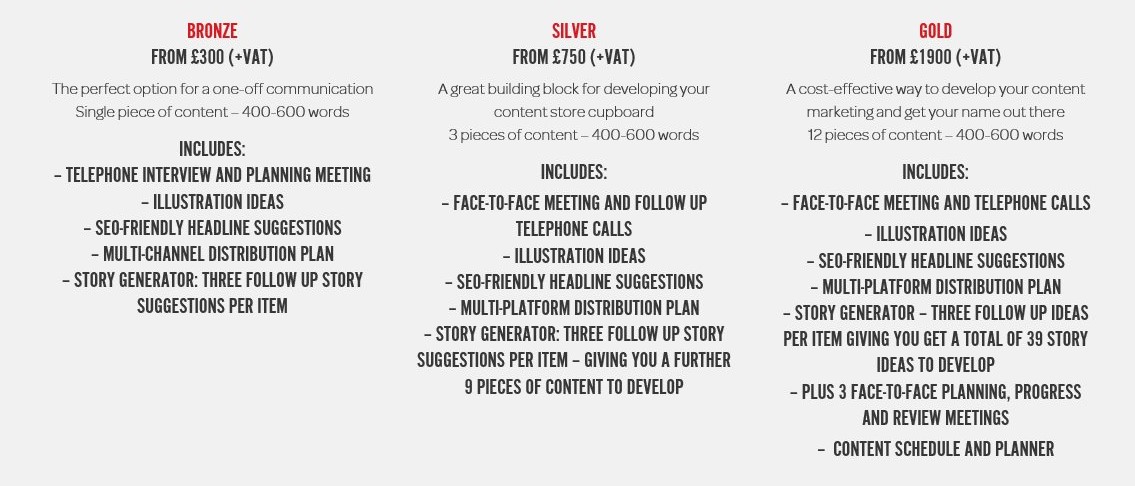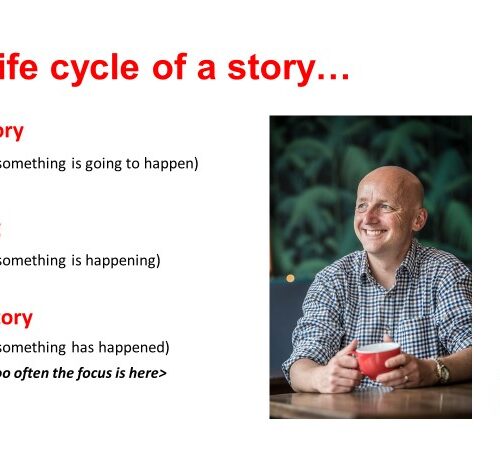Pricing for content (versus the lure of the infinite margin)
When it comes to pricing for content are you struggling as a business to work out what you should be paying?
It’s not surprising as the options are manifold. You could hop on to a freelance site or content mill and accept a bid totalling a few pounds. Or spend time scrolling through a lush agency blog, but be none the wiser about what the final bill for all that creative will be when it lands.
Three arguments against revealing your prices for content
* The only people who will benefit are your competitors
* They will undercut you
* You’re putting off prospects by showing your hand (and you might be able to charge more…)
And here is what I’ve been thinking in response:
* I want to be open and transparent
* I’m not wasting anybody’s time
* Can they do what I do?
It’s always struck me that there is no easy at-a-glance way to find out about pricing for content and how much you are actually going to pay.
That’s not completely true – there are some great examples of people who are very upfront about what they do and for how much.
Here’s one Case Study Buddy: The customer case study specialists

It’s by Joel Klettke a Canadian ‘conversion’ copywriter who I came across on Twitter and I really admire what he is trying to do. In fact I love his web page above (I wish I’d thought of it!).
And check out this website I found when I searched for ‘pricing for content’
But I think that kind of upfront approach to pricing for content is something which you associate with doing business on the other side of the Atlantic. I’ve struggled to find similar examples in the UK. May be you’ve seen some, if so please share them.
And I don’t often see it set out clearly in the world of agencies, content marketing or even newspaper advertorials how much you are going to pay – yet again may be I just haven’t seen it. And if that’s the case then I’m on standby to be corrected.
Left in the dark
When I speak to clients or prospects they talk about their fears that if they are engaging an agency or consultant then they’re worried that they won’t know what they are going to get.
So taking my cue from them and from Joel here are three content packages which I’m putting out there:
My Three Content Connective Pricing packages

All of these are based on real work that I’ve actually done with clients. It’s not all I do as I still do bespoke projects, of course.
But I’m hoping it will explain to people what I do, but if you’re still not sure then how about this below…

Is it madness to be upfront about pricing for content?
If you look at how the tech companies have disrupted the market place one of the things you see is how the SaaS model has torn up the traditional way of doing things. Now you can opt for a pricing package to suit you – they typically come in threes and generally speaking they want you to pick the middle one.
At the other end of the spectrum when it comes to content there are also the freelancer sites.
I can see that for some people it’s a great low risk way of trying out a freelancer and then may be working with them on a more permanent footing, so it must have it’s place in the market place.
I know some business owners who swear by them and have even built their businesses using them.
The lure of the infinite margin
But there is also another siren voice which tugs at the small business owner and the freelancer when it comes to pricing – the lure of the infinite margin.
What that means is why quote a set fee when the task in hand may well depend on what the client is prepared to pay?
A strong argument for this approach is laid out in the book Run Your Own Business by Kevin Duncan (this is a great ready for any small business owner or self-employed person btw)
And there is a logic to it, given that small, owner-managed businesses excel at providing an excellent bespoke service, so why not charge based on the job in question and the client’s propensity to pay?
It’s a fair point.
But for me the argument for displaying prices is twofold
Firstly, people these days are going to be searching for you before making a purchasing decision. That means they want to be armed with as much information as possible before they contact you. Failing to provide details of your pricing means that they are simply going to screen you out.
A strong argument for this approach is made in the excellent book They Ask You Answer by Marcus Sheridan.
Secondly, by being clear on your pricing you’re are qualifying prospects and leads, and, let’s be honest, screening out time wasters.
That means if someone calls after seeing your prices, there’s a good chance they’re interested. And if they don’t they’re either not, or simply not ready to by right now.
So where am I?
I am real person, so it’s always me you will deal with. I’m not a content mill, so sorry but I can’t do anything for a couple of pounds, I’m afraid.
But I do want to be open and transparent, and I’ll be the one doing the work – unless by some combination of hardwork, bloodymindedness and most of all luck I hit the jackpot and fulfil my ambitions of bringing others in to work with me.
I’m always on the other end of the phone
May be I will be shot to pieces for trying this approach – but it fits in with how I want to be and what I’ve always felt, and I think it helps the customer as there are no hidden surprises, so I think it’s right to give it a go.
And I think it’s coming to other professional services industries such as law and accountancy too.
But will the market feel the same? Why don’t we find out?
The Call to Action bit: I see stories as opportunities, if you think great storytelling could help grow your business then hire me!
If you have enjoyed reading this article then why not share it below?





